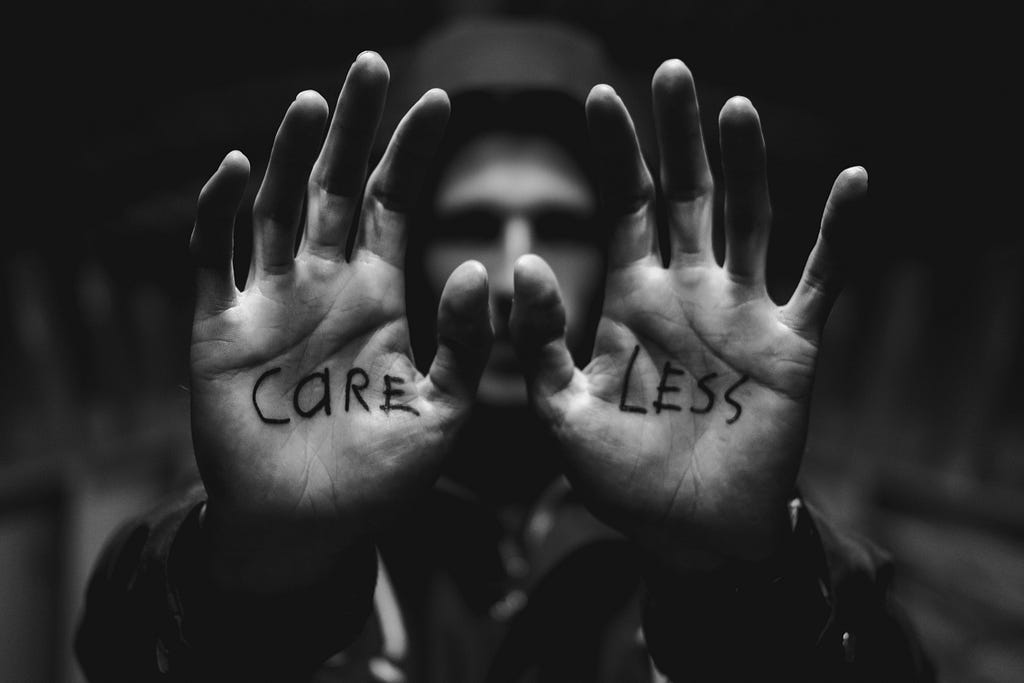Build Design Systems With Penpot Components
Penpot's new component system for building scalable design systems, emphasizing designer-developer collaboration.

UX Planet — Medium | Guy Ligertwood

Do you often hear the word ‘empathy’ at work?
Do you find that it gets thrown around too much in the world of design?
Do you know what it means?
Would you like to be able to improve your empathy and become a better designer in the process?
During my time as a designer, I’ve heard the word empathy a lot, too much if I’m honest. When we study user experience, we’re told to have lots of it for our users.
I don’t know a lot about empathy. The process of researching the topic helps me to reflect on it more, and improve my understanding of it.
Before doing my research for this article, I thought of empathy as putting yourself in someone else’s shoes. After digging around I found that there much more to it. Here what’s covered in this article:
It is through weakness and vulnerability that most of us learn empathy and compassion and discover our soul.
(Desmond Tutu)
Empathy is seeing with the eyes of another, listening with the ears of another, and feeling with the heart of another.
It allows understanding not only of other’s beliefs, values, and ideas but also the significance that their situation has for them and their associated feelings (Rogers, 1951).
The English word empathy comes from the Ancient Greek word empatheia, meaning ‘physical affection or passion.’ Empathy is the ability to share and understand the emotions of others.
The verbal and nonverbal expression of sorrow or dismay (Morse et al, 1992).
Active participation in another individual’s suffering (Schantz, 2007).
There are four ways to look at empathy:
This is the ability to share the emotions of others.

People who show a high level of affective empathy feel what others feel. For example if they see someone hurt themselves they don’t literally feel their pain, but they do have a sensation of that person’s pain within themselves.
A good example, could be a designer working on a website designed to help divorced couples. If that designer has experience of divorce, they would likely have a strong emotional sensation of affective empathy.
This is understanding someone’s thoughts and emotions, in a rational, rather than emotional sense.

Also, know as ‘perspective taking,’ cognitive empathy is deliberate. It’s putting you in someone else’s shoes but without fully engaging with their emotions. This type of empathy is more by thought rather than feeling.
With this kind of empathy we not only understand a person’s predicament and feel with them, but are spontaneously moved to help, if needed. (Paul Ekman).

Empathic concern is often confused with empathy. To empathise is to respond to another’s perceived emotional state by experiencing feeling of a similar sort. Compassionate empathy or empathic concern not only includes empathising, but also entails having a positive regard concern for the other person (Wikipedia).
This refers to the ability to regulate one’s emotions. Emotional regulation is a complex process that involves initiating, inhibiting, or modulating one’s state or behaviour in a given situation (wikipedia).

The is the regulation of empathy that a person may have. Doctors and nurses need to be strong in emotional self-regulation to separate their jobs from their emotions.
Empathy is the most radical of human emotions
(Gloria Steinem)
Scientists have long speculated that some aspects of empathy can be traced to mirror neurons. These are cells in the brain that fire when we observe someone else perform an action in the same way that they would fire if we performed that action ourselves.
Empathy allows us to create bonds of trust, it gives us insights into what others may be feeling or thinking; it helps us understand how or why others are reacting to situations, it sharpens our ‘people acumen’ and it informs our decisions. (yourself series)

Empathy is important because it helps us to understand another’s feelings so we can respond appropriately. We can understand each other’s experiences through empathy and as a result, are more likely to help each other.
Seung Chan Lim (Slim) does a magical job of explaining how humility, courage and empathy help navigate the creative process. This 10 minute video is an inspiring watch.
I’ve pulled out some key parts for you to consider:
It can apply to our work colleagues, clients, and suppliers. It can refer to the materials we design with and can even apply to ourselves.
When we try to empathise with another instead of treating them as a problem to be solved, we listen to them.
As you try to empathise with others. it helps you better understand yourself. Trying to write well for others helps you better know what you’re thinking. Teaching someone something helps you better see what you’re trying to explain.
Trying to empathise with another in the creative process is intrinsically reciprocal. Once you move past the idea of “understanding” as the only way to empathise with others, you’ll notice that empathy is not merely about receiving, but also about giving. The act of giving is, in the end, the act of receiving. It’s simply a loop that goes full circle.
Seung Chan Lim concludes that:
One of the most beautiful things I’ve learned while researching empathy is that as we realise empathy with “others,” we become better at realising empathy with our “selves.”
Research shows that empathy is part natural and part learned. Here are ten ways you can strengthen and improve your empathy:
Read books and articles that look at emotions and relationships. In a study, this was shown to improve the empathy of new doctors.
Find out from family and friends how your listening skills are.
If you work on your curiosity and ask more questions, you’ll gain a better understanding of what makes people tick.
Change your environment. You get a much better understanding of others if you go to new places and see how people live differently.
Study something new, start writing, reads new things, take an acting class. Getting out of your comfort zone and learning new things makes you humble. Humility is a an essential ingredient to empathy.
We all have judgments that stop us listening and empathising properly. Look at your biases around age, race, gender and sexual orientation. Be honest with yourself and work on these areas to improve your empathy. More often than not listening to another’s story changes your bias towards them.
The more time you spend with individuals with high amounts of empathy, the more you learn about being empathetic. In a sense, this rubs off on you.
When talking to clients or colleagues concentrate on asking more interesting questions. Get to the heart of what you want to know.
At a zebra crossing wave to say thank you to the vehicles that stopped. My kids always do this, and I’ve learned from them to do the same. Hold the door open for someone. Say thank you when someone open’s the door for you. The more of these little acts you do, the more conscious you’ll become of your empathy.
Ask people about their lives and what their troubles. Hear what they have to say. The more you listen, the more you’ll see that everyone has stuff going on. People have bad days; some are sick, some are having problems at home or work.
There are several ways we can bring more empathy into our work day.
As designer’s, it’s our job to make a product usable, accessible and pleasurable to use. We know we’re meant to have empathy, but we don’t necessarily practice it or know much about it. Being conscious of, and working to improve it is a great starting place to improve yourself as a designer.
When you have compassionate empathy I believe that you have an increased chance of creating real change. Compassion creates the same emotions as empathy, but when you feel it you have more of a desire to take action.
What do you wish you’d known when you first started out as a designer? I wish I’d known how important compassion was.
Helen Tran, Design lead at Spotify (Invision blog post)
I would love to hear how you work on your empathy and compassion?
Other great reads on empathy:
Design is mainly about empathy
Using empathy to empower your users
5 Must Read Articles on Empathy and UX Design
New to UX Design? Feeling Overwhelmed?
Writing for the Web: How To Be Well Prepared With This Great Checklist
24 Ways to Look Like an Awesome UX Designer
51 Research Terms You Need to Know as a UX Designer
53 Tech Terms You Need to Know as a UX Designer
How to become a UX Designer at 40 with no digital or design experience
Thanks to John Duncan for the proofread and Alana Brajdic, Sam Marchant and Nathan Streater for the title help.
Please click the 💚️ below and leave a comment to help others find it. Thanks for reading.
UX Designers: How to improve your empathy to be a better designer was originally published in UX Planet on Medium, where people are continuing the conversation by highlighting and responding to this story.
AI-driven updates, curated by humans and hand-edited for the Prototypr community